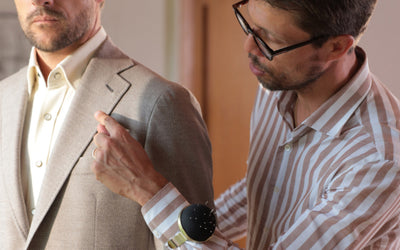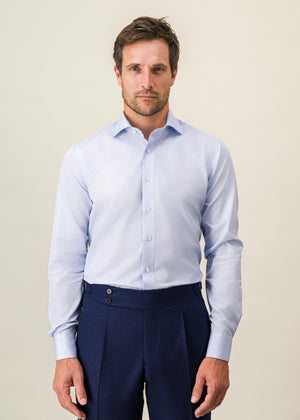
Découvrez l'histoire de nos cravates en tricot pour homme
Chez Frédéric Costa, nous accordons une attention particulière à ce détail qui fait toute la différence.

La cravate en tricot
Le mot "cravate" trouve ses origines dans le terme "croate", utilisé depuis le XVIIe siècle, en référence aux foulards que les combattants croates nouaient autour de leur cou avant de partir au combat. Toutefois, ce n’est qu’au XXe siècle, et particulièrement dans les années 1920, que la cravate s'impose comme un accessoire quotidien.
Dans cette même période, la cravate tricot voit le jour, portée d'abord par les classes populaires et les écoliers. Confectionnée en lin ou laine, elle est à la fois abordable et simple à tricoter soi-même. Longue et fine, elle se distingue des cravates en soie, souvent plus luxueuses.

Fabrication de la cravate tricot
La cravate tricot se distingue par son procédé de fabrication : elle est tricotée, et non tissée. Contrairement aux tissus traditionnels, elle n’est pas constituée de fils de chaîne et de trame, mais de boucles entrelacées les unes dans les autres.
Le processus de tricotage est tubulaire, chaque maille étant réalisée par une machine, puis bloquée par des aiguilles successives. Cette technique confère à la cravate une grande élasticité, tout en assurant sa solidité grâce au fil de soie tordu avant le tricotage.
Le bout de la cravate est carré, et une bande de satin ou de reps, appelée le collier, est cousue pour protéger le col des frottements avec la maille rugueuse.

Comment porter une cravate en tricot ?
La cravate en tricot apporte une touche décontractée et raffinée à toute tenue. Elle se porte aussi bien en look business qu’en style casual. Les motifs classiques incluent les unis, les pois et les rayures horizontales, tandis que le motif caviar, bicolore et raffiné, gagne en popularité.
Les couleurs vont du bleu classique au bordeaux, violet ou vert sapin, avec des pastels pour un look plus léger. Préférez un nœud simple ("four-in-hand") et évitez la pince à cravate pour garder l’effet décontracté.
Idées de Tenues : Portez-la avec un costume en laine peignée pour un look professionnel, ou avec un costume en tweed pour un style plus décontracté. Pour le week-end, une cravate unie ou à pois avec une veste sport et un jean brut fera parfaitement l’affaire.
Découvrez les cravates
-
Example product title
Regular price 19,99 € EURRegular priceUnit price / per -
Example product title
Regular price 19,99 € EURRegular priceUnit price / per -
Example product title
Regular price 19,99 € EURRegular priceUnit price / per -
Example product title
Regular price 19,99 € EURRegular priceUnit price / per






